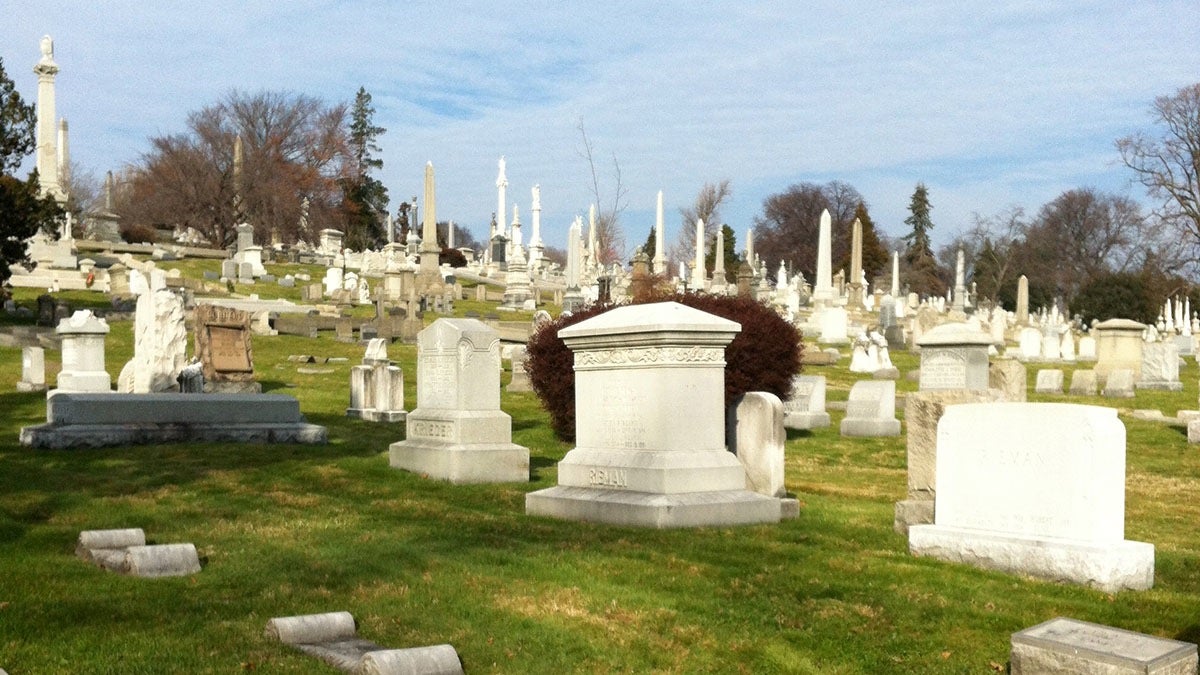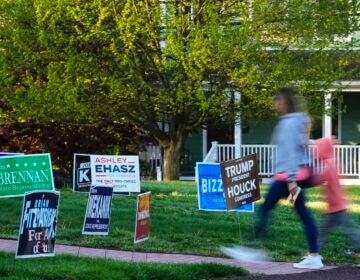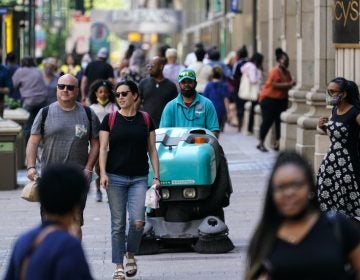Top 6 haunted and eerie spots in Northwest Philly

Laurel Hill Cemetery is a favorite among paranormal investigators. (Emily Brooks/for NewsWorks)
In the country’s oldest city, Northwest Philly is full of rich history, with buildings that served as residencies for many of our Founding Fathers and landmarks that mark the sites of pivotal Revolutionary War battles.
It’s no surprise then, that rumors and reports of ghost sightings and other spooky happenings have been documented throughout the years. If the Halloween season sparks your interest for the haunted and you’re craving that icy chill and some tingling on the back of your neck, keep in mind this top six list of the Haunted Northwest.
6. Leverington Cemetery – Roxborough
Ghost hunters flock to the Leverington Cemetery, one of the most actively documented locations for orbs and apparitions in Philadelphia. Located on Ridge Avenue in Roxborough, the Leverington Cemetery is the resting ground of local Philadelphia civilians and both Revolutionary and Civil War soldiers dating back to the early 1800s. Official records of the cemetery’s residents were lost in a fire in the 1960s, and while the cemetery is no longer selling grave plots, it remains open to the public. Time worn and broken gravestones hidden under overgrown brush seal an eerie fate to many of those who rest there, now unknown.
5. Laurel Hill Cemetery – East Falls
With over 33,000 monuments and more than 11,000 family plots, the beautiful Laurel Hill Cemetery is a favorite among paranormal investigators as well as joggers, artists, tourists and photographers. With 78 acres to explore in this National Historic Landmark, Laurel Hill Cemetery marks the burial ground of several Philadelphia elite including Rittenhouse, Widener, Elkins and Strawbridge. General George Meade and 39 other Civil War-era generals and six Titanic passengers are also buried on the site. Tours are especially popular this time of year, as Laurel Hill’s historians lead visitors to witness some of the city’s most notable gravesites and share some of the cemetery’s most spook-worthy tales.
4. Cliveden (Benjamin Chew House) – Germantown
Located at 6401 Germantown Ave, Cliveden was built between 1763-1767 as the summer home for Benjamin Chew, head of the Pennsylvania Judiciary System, and remained inhabited by the family until the early 1970s. In 1777, Cliveden served as a central point during the Battle of Germantown, one of the bloodiest battles of the Revolutionary War. With British soldiers barricaded inside, General Washington and his troops unsuccessfully attempted to capture Cliveden. When the fighting subsided, 152 soldiers were left dead; 70 of them on the Cliveden grounds. Historic documents describe the scene as a “slaughterhouse.”
Remnants of the battle still remain, both physically and supernaturally. Blood stains mark the walls and spirits of colonial soldiers are reported to walk the halls. To date, the most documented spirit at Cliveden remains that of an elderly, and headless, woman. Stories differ as to how the woman met her fate, yet many have claimed to see her stumble out of the mansion and into the trees and brush alongside the home. A museum and event space at Cliveden is open to the public for tours and exploration.
3. Grumblethorpe – Germantown
Another historic building from the Revolutionary era, Grumblethorpe served as the summer home, and eventual permanent residence of merchant and wine importer, John Wister and his family. During the Battle of Germantown in 1777, General James Agnew occupied the house as use for his headquarters. It was at Grumblethorpe that General Agnew met his demise. He was shot in the building’s front parlor, where his blood stains still remain.
Now a National Historic Landmark, Grumblethorpe serves as a museum, yet reports continue of two apparitions who haunt the home. Most prominently is that of General Agnew; though another spirit, a young woman named Justinia, has also been witnessed. Legend states that Justinia was an orphan taken in by the Wisters during the yellow fever epidemic. She died at Grumblethorpe in the early 1800s. Reports claim the apparition of Justinia is often accompanied by the smell of baking bread.
2. Loudoun Mansion – Germantown
The Loudoun Mansion is an architectural masterpiece located on top a hill in the Germantown. Built in 1801 over the burial grounds of several fallen soldiers from the Revolutionary War, perhaps Loudoun was doomed from the start. Today, reportedly five different apparitions haunt the property. The most well known spirit is Maria Dickinson Logan, a descendant of the original family who died in 1939 and left the home and its surrounding land to Fairmount Park.
Logan is often spotted in her former bedroom, where many of her personal items are on display. Those who work or spend time at Loudoun claim these items unexplainably seem to move from place to place throughout the room. There are also many reports of a young boy, “Little Willie,” thought to be the spirit of William Armat Logan, who suffered from disabilities and died in the home in 1860 at age eight. In 1994 a stroke of lightning set Loudoun on fire. Though much of the building was severely damaged, the building’s historic artifacts and antiques remained unharmed. Many attribute this to Loudoun’s spirits protecting their family’s most sacred heirlooms.
1. Baleroy Mansion – Chestnut Hill
The most historically haunted house in the Northwest Philadelphia is by far the Baleroy Mansion, located in Chestnut Hill. There have been reports of apparitions seen in each of the 32 rooms within the mansion, that at one time housed dozens of historic artifacts from people such as Thomas Jefferson and Napoleon. The house was built in 1911 and was home to the Easby family, direct descendants of Civil War General George Meade.
The first reported hauntings came in the form of a young child, Stephen Easby, who lived in the house for just a few short years before dying unexpectedly at the age of six. George Meade Easby, who lived in the home until his death in 2005 was brother to Stephen. George spoke freely of the house’s hauntings and often recalled a memory of his childhood — seeing his brother’s reflection in the shape of a skeleton just days before his untimely death. Visitors and family members also report visions of Thomas Jefferson and other former family members. It is not uncommon for lights to flicker, objects to fly across the room or unexplained footsteps to tread the floors.
In September 2012, Chestnut Hill natives Jay and Susie Valinis moved into Baleroy Mansion with their sons, Joe and Owen.
“Certain things happen and you start to wonder,” Jay said of their new home. “Your mind plays tricks on you, but we really haven’t had any major supernatural experiences.”
But that doesn’t mean their guests haven’t. “We were sitting around the fire last winter with two very close friends of ours,” Susie recalled. “Suddenly, at the exact same time, both of them turned their heads sharply and gasped. ‘Go check the kids!’ they screamed. Both of them had seen a young boy pass through the hallway outside the living room. When I checked the boys, both were sound asleep. As much as we tried, we could not recreate an explanation to what they had seen,” Susie continued. “And they actually had never heard the story of the young boy’s ghost.”
Baleroy is a private residence and is not open for tours.
WHYY is your source for fact-based, in-depth journalism and information. As a nonprofit organization, we rely on financial support from readers like you. Please give today.




